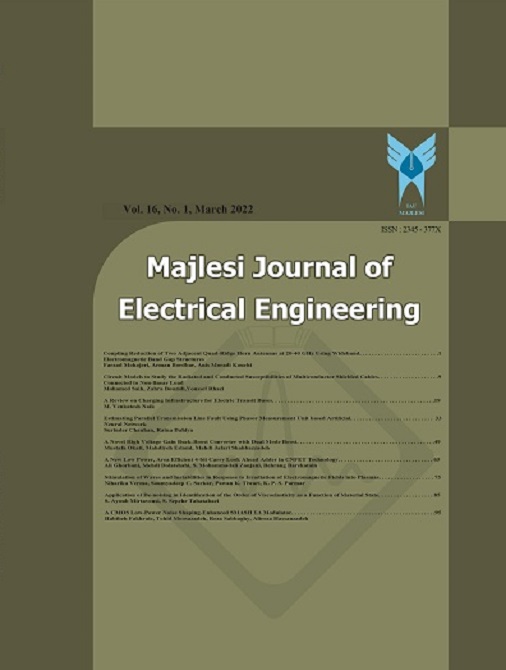[1] J. M. Garriga, “The use of water in agriculture: making progress in modernising irrigation and efficient water management,” CaixaBank Research. [Online]. Available: https://www.caixabankresearch.com/en/sector-analysis/agrifood/use-water-agriculture-making-progress-modernising-irrigation-and-efficient
[2] S. M. Cheema, M. Khalid, A. Rehman, and N. Sarwar, “Plant irrigation and recommender system–IoT based digital solution for home garden,” in Communications in Computer and Information Science, 2019, pp. 513–525. doi: 10.1007/978-981-13-6052-7_44.
[3] I. A. Lakhiar et al., “A review of precision irrigation water-saving technology under changing climate for enhancing water use efficiency, crop yield, and environmental footprints,” Agriculture, vol. 14, no. 7, p. 1141, 2024, doi: 10.3390/agriculture14071141.
[4] I. A. Lakhiar et al., “Plastic pollution in agriculture as a threat to food security, the ecosystem, and the environment: An Overview,” Agronomy, vol. 14, no. 3, p. 548, 2024, doi: 10.3390/agronomy14030548.
[5] M. Rohith, R. Sainivedhana, and N. Sabiyath Fatima, “IoT enabled smart farming and irrigation system,” in International Conference on Intelligent Computing and Control Systems, 2021, pp. 434–439. doi: 10.1109/ICICCS51141.2021.9432085.
[6] V. H. Andaluz, A. Y. Tovar, K. D. Bedon, J. S. Ortiz, and E. Pruna, “Automatic control of drip irrigation on hydroponic agriculture: Daniela tomato production,” in IEEE International Conference on Automatica, 2016, pp. 1–6. doi: 10.1109/ICA-ACCA.2016.7778389.
[7] R. Nurhasanah, L. Savina, Z. M. Nata, and I. Zulkhair, “Design and implementation of IoT based automated tomato watering system using ESP8266,” in International Conference on Computing and Applied Informatics, 2021, pp. 1–8. doi: 10.1088/1742-6596/1898/1/012041.
[8] S. Praptodiyono, W. Setiawan, and S. Sadi, “Automatic watering system for tomato plants based on soil moisture detection,” J. FORTEI-JEERI, vol. 1, no. 1, pp. 9–18, 2020, doi: 10.46962/forteijeeri.v1i1.3.
[9] A. I. Bria, H. J. Djahi, and D. E. D. G. Pollo, “Automatic watering device for tomato using soil moisture sensor,” in International Conference and Exhibiton on Sciences and Technology, 2018, pp. 152–160.
[10] S. N. S. Al-Humairi, P. Manimaran, M. I. Abdullah, and J. Daud, “A smart automated greenhouse Soil moisture, temperature monitoring and automatic water supply (Peaty, Loam and Silty),” in IEEE Conference on Sustainable Utilization and Development in Engineering and Technologies, 2019, pp. 111–115. doi: 10.1109/CSUDET47057.2019.9214661.
[11] J. J. Karwande and P. J. Karwande, “Automatic watering system with efficient sun tracking solar plate,” in IEEE International Conference on Computing, Power and Communication Technologies, 2020, pp. 794–797. doi: 10.1109/GUCON48875.2020.9231180.
[12] T. George Princess and E. Poovammal, “An IoT based watering system for tomato crop on smart agriculture,” in International Conference on Intelligent Computing and Control Systems, IEEE, 2023, pp. 1563–1568. doi: 10.1109/ICICCS56967.2023.10142270.
[13] A. Hernández-Salazar Jorge, H. R. David, A. Hernández-Cruz Rosi, C. Ramos-Fernández Julio, A. Márquez-Vera Marco, and R. Trejo-Macotela Francisco, “Estimation of the evapotranspiration using ANFIS algorithm for agricultural production in greenhouse,” in IEEE International Conference on Applied Science and Advanced Technology, 2019, pp. 1–5. doi: 10.1109/iCASAT48251.2019.9069533.
[14] M. V. Caya, A. Ballado, E. M. C. Rabino, and C. Anthony Delim, “ET-based smart irrigation system with irrigation postponement algorithm for lycopersicon esculentum or tomato plant,” in IEEE International Conference on Humanoid, Nanotechnology, Information Technology, Communication and Control, Environment, and Management, 2019, pp. 1–5. doi: 10.1109/HNICEM48295.2019.9073417.
[15] J. E. Colimba-Limaico, S. Zubelzu-Minguez, and L. Rodríguez-Sinobas, “Optimal irrigation scheduling for greenhouse tomato crop (Solanum Lycopersicum L.) in Ecuador,” Agronomy, vol. 12, no. 5, pp. 1–15, 2022, doi: 10.3390/agronomy12051020.
[16] N. Ichwan, D. P. Purba, D. L. S. Nasution, H. Sartiva, and S. B. Daulay, “Estimating water requirements of tomato plant based on forecast-evapotranspiration equation in Semangat Village, Merdeka Sub-district, Karo Regency, North Sumatera Province, Indonesia,” in International Conference on Agriculture, Environment and Food Security, 2020, pp. 1–5. doi: 10.1088/1755-1315/782/2/022074.
[17] J. Liu, T. Hu, P. Feng, L. Wang, and S. Yang, “Tomato yield and water use efficiency change with various soil moisture and potassium levels during different growth stages,” PLoS One, vol. 14, no. 3, pp. 1–14, 2019, doi: 10.1371/journal.pone.0213643.
[18] Astija, Anggy Rizky Januarista, Vita Indri Febriani, and Lestari MP Alibasyah, “The effect of soil pH on a carbohydrate level of tomato fruits (Lycopersicum esculentum Mill.) from bobo and Sidera villages,” GSC Adv. Res. Rev., vol. 12, no. 1, pp. 1–4, 2022, doi: 10.30574/gscarr.2022.12.1.0169.
[19] A. Ruiz‐gonzalez, H. Kempson, and J. Haseloff, “In Vivo Sensing of pH in Tomato Plants Using a Low‐Cost and Open‐Source Device for Precision Agriculture,” Biosensors, vol. 12, no. 7, pp. 1–21, 2022, doi: 10.3390/bios12070447.
[20] A. Abdelmoamen Ahmed, S. Al Omari, R. Awal, A. Fares, and M. Chouikha, “A distributed system for supporting smart irrigation using Internet of Things technology,” Eng. Reports, vol. 3, no. 7, pp. 1–13, 2021, doi: 10.1002/eng2.12352.
[21] T. Baranwal, Nitika, and P. K. Pateriya, “Development of IoT based smart security and monitoring devices for agriculture,” in International Conference - Cloud System and Big Data Engineering, IEEE, 2016, pp. 597–602. doi: 10.1109/CONFLUENCE.2016.7508189.
[22] M. Bettelli et al., “Classification and Forecasting of Water Stress in Tomato Plants Using Bioristor Data,” IEEE Access, vol. 11, pp. 34795–34807, 2023, doi: 10.1109/ACCESS.2023.3265597.
[23] S. Namba, J. Tsuji, and M. Noto, “Image-based analysis of water content change in tomato cultivation,” in IEEE International Conference on Systems, Man, and Cybernetics, IEEE, 2018, pp. 2200–2205. doi: 10.1109/SMC.2018.00378.
[24] R. Allen, “Penman-Monteith Equation,” in Encyclopedia of Soils in the Environment, D. Hillel, Ed., Elsevier, 2005, pp. 180–188.
[25] N. Ichwan, D. L. S. Nasution, H. Sartiva, and S. B. Daulay, “Forecasting evapotranspiration equation based on Hargreaves evapotranspiration method for Semangat Village, Merdeka sub-district, Karo regency, North Sumatera province, Indonesia,” in International Conference on Agriculture, Environment and Food Security, 2020, pp. 1–5. doi: 10.1088/1755-1315/782/2/022072.
[26] Implexx Sense, “ETo reference crop evapotranspiration explained.” [Online]. Available: https://www.implexx.io/manuals-and-guides/eto-reference-crop-evapotranspiration-explained/
[27] S. B. Mir and G. F. Llueca, “Introduction to programming using mobile phones and MIT App Inventor,” Rev. Iberoam. Tecnol. del Aprendiz., vol. 15, no. 3, pp. 192–201, 2020, doi: 10.1109/RITA.2020.3008110.
[28] T. Munasinghe, E. W. Patton, and O. Seneviratne, “IoT application development using MIT App Inventor to collect and analyze sensor data,” in IEEE International Conference on Big Data, IEEE, 2019, pp. 6157–6159. doi: 10.1109/BigData47090.2019.9006203.

